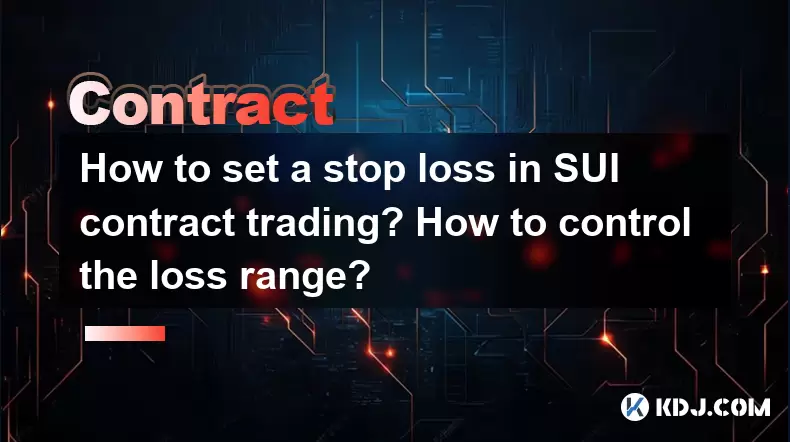-
 Bitcoin
Bitcoin $118300
0.75% -
 Ethereum
Ethereum $4544
3.21% -
 XRP
XRP $3.128
-0.31% -
 Tether USDt
Tether USDt $1.001
0.02% -
 BNB
BNB $861.4
3.94% -
 Solana
Solana $192.2
3.12% -
 USDC
USDC $1.000
0.01% -
 Dogecoin
Dogecoin $0.2332
0.92% -
 Cardano
Cardano $0.9702
6.55% -
 TRON
TRON $0.3513
-0.44% -
 Chainlink
Chainlink $24.69
14.60% -
 Hyperliquid
Hyperliquid $47.42
1.65% -
 Stellar
Stellar $0.4307
0.74% -
 Sui
Sui $3.826
3.32% -
 Bitcoin Cash
Bitcoin Cash $590.6
0.12% -
 Ethena USDe
Ethena USDe $1.001
-0.01% -
 Hedera
Hedera $0.2560
2.83% -
 Avalanche
Avalanche $24.84
4.94% -
 Litecoin
Litecoin $122.0
2.95% -
 Toncoin
Toncoin $3.493
0.20% -
 UNUS SED LEO
UNUS SED LEO $9.460
-1.09% -
 Shiba Inu
Shiba Inu $0.00001316
2.12% -
 Uniswap
Uniswap $11.19
2.94% -
 Polkadot
Polkadot $4.059
3.61% -
 Dai
Dai $1.000
0.00% -
 Bitget Token
Bitget Token $4.686
2.09% -
 Cronos
Cronos $0.1530
2.18% -
 Monero
Monero $267.4
11.83% -
 Ethena
Ethena $0.7250
0.52% -
 Pepe
Pepe $0.00001121
3.26%
How to set a stop loss in SUI contract trading? How to control the loss range?
Setting a stop loss in SUI contract trading helps limit losses; use platforms like Binance, set your price, and adjust as the market moves to manage risk effectively.
May 09, 2025 at 12:49 am

Trading in the cryptocurrency market, particularly with SUI contracts, can be both exciting and risky. One of the most effective ways to manage risk is by setting a stop loss. This article will guide you through the process of setting a stop loss in SUI contract trading and explain how to control the loss range effectively.
Understanding Stop Loss in SUI Contract Trading
Stop loss is a critical tool for traders to limit potential losses on their positions. In the context of SUI contract trading, a stop loss order is an instruction to sell a contract when it reaches a certain price level. This helps traders to exit a position before losses become too significant.
When trading SUI contracts, setting a stop loss can protect your investment from sudden market downturns. It's essential to understand that while stop losses can minimize losses, they do not guarantee that you will exit at the exact price you set due to market volatility and slippage.
How to Set a Stop Loss in SUI Contract Trading
Setting a stop loss in SUI contract trading involves a few straightforward steps. Here's how you can do it:
Choose a Trading Platform: First, ensure you are using a trading platform that supports SUI contract trading and stop loss orders. Popular platforms like Binance, Coinbase, and others often provide this feature.
Open a Position: Once you have selected your platform, open a position in SUI contracts. Decide whether you want to go long or short based on your market analysis.
Set the Stop Loss: After opening your position, navigate to the order settings. Look for the option to set a stop loss. This is usually found under the "Order" or "Trade" section.
Enter the Stop Loss Price: Input the price at which you want the stop loss to trigger. For example, if you bought SUI contracts at $10 and want to limit your loss to 5%, you would set the stop loss at $9.50.
Confirm the Order: Review your settings and confirm the order. The stop loss will now be active, and if the price of SUI contracts reaches your specified level, the order will be executed.
Controlling the Loss Range in SUI Contract Trading
Controlling the loss range is crucial for managing risk effectively. Here are some strategies to help you control the loss range when trading SUI contracts:
Determine Your Risk Tolerance: Before setting a stop loss, assess your risk tolerance. Decide how much you are willing to lose on a single trade. This will help you set a realistic stop loss level.
Use Technical Analysis: Utilize technical analysis tools to identify key support and resistance levels. Setting your stop loss just below a support level can help you avoid being stopped out prematurely.
Consider Volatility: SUI contracts can be highly volatile. Take into account the average volatility of SUI when setting your stop loss. A wider stop loss might be necessary to avoid being triggered by normal market fluctuations.
Adjust Stop Loss as Needed: As the market moves, you may need to adjust your stop loss. If the price of SUI contracts moves in your favor, consider moving your stop loss to lock in profits and reduce your potential loss range.
Common Mistakes to Avoid When Setting Stop Losses
Setting a stop loss is not without its pitfalls. Here are some common mistakes to avoid:
Setting Stop Losses Too Tight: If your stop loss is too close to the entry price, you risk being stopped out by normal market fluctuations. This can lead to unnecessary losses.
Ignoring Market Conditions: Failing to consider current market conditions can result in poorly placed stop losses. Always take into account the overall market sentiment and volatility.
Not Adjusting Stop Losses: Once a position is in profit, many traders forget to adjust their stop losses. This can lead to giving back profits if the market reverses.
Over-Reliance on Stop Losses: While stop losses are essential, they should not be the only risk management tool you use. Diversify your risk management strategies to protect your investments better.
Practical Example of Setting a Stop Loss in SUI Contract Trading
Let's walk through a practical example of setting a stop loss in SUI contract trading:
Scenario: You believe that SUI contracts are about to increase in value, so you decide to go long at $10 per contract.
Risk Assessment: You are willing to risk 5% of your investment on this trade. Therefore, your maximum acceptable loss per contract is $0.50.
Setting the Stop Loss: You set your stop loss at $9.50. If the price of SUI contracts drops to $9.50, your position will be automatically closed, limiting your loss to $0.50 per contract.
Monitoring and Adjusting: As the price of SUI contracts rises to $11, you decide to adjust your stop loss to $10.50 to lock in some profit and reduce your potential loss range.
Frequently Asked Questions
Q: Can I set a stop loss on all types of SUI contracts?
A: Most trading platforms allow you to set stop losses on various types of SUI contracts, including futures and options. However, it's essential to check with your specific platform to confirm their policies and any limitations.
Q: What happens if the market gaps through my stop loss price?
A: If the market gaps through your stop loss price, your order may be executed at the next available price, which could be worse than your stop loss level. This is known as slippage and is a risk you need to be aware of when trading SUI contracts.
Q: How often should I adjust my stop loss?
A: The frequency of adjusting your stop loss depends on your trading strategy and market conditions. Some traders adjust their stop losses daily, while others do so based on significant price movements or when their position reaches a certain profit level.
Q: Is it possible to set a trailing stop loss for SUI contracts?
A: Yes, many trading platforms offer the option to set a trailing stop loss for SUI contracts. A trailing stop loss automatically adjusts as the price moves in your favor, helping you lock in profits while still protecting against significant losses.
Disclaimer:info@kdj.com
The information provided is not trading advice. kdj.com does not assume any responsibility for any investments made based on the information provided in this article. Cryptocurrencies are highly volatile and it is highly recommended that you invest with caution after thorough research!
If you believe that the content used on this website infringes your copyright, please contact us immediately (info@kdj.com) and we will delete it promptly.
- Kazakhstan's Crypto Leap: Bitcoin ETF and Central Asia's Digital Finance Future
- 2025-08-13 12:45:19
- BlockDAG Presale Blazes Past $371M: Fundraising Frenzy Fuels Crypto Sensation
- 2025-08-13 13:05:21
- Meme Coins: Chasing the 2025 Surge – Which Will Moonshot?
- 2025-08-13 10:25:23
- Bitcoin's Wild Ride: Rally, Pullback, and What's Next
- 2025-08-13 10:25:23
- Bitcoin, Bitmax, and Institutional Demand: A New Era of Crypto Investment
- 2025-08-13 10:45:12
- Solana, ROAM, and Airdrops: What's the Buzz in 2025?
- 2025-08-13 11:35:13
Related knowledge

Is it possible to adjust the leverage on an open position on KuCoin?
Aug 09,2025 at 08:21pm
Understanding Leverage in KuCoin Futures TradingLeverage in KuCoin Futures allows traders to amplify their exposure to price movements by borrowing fu...

What cryptocurrencies are supported as collateral on KuCoin Futures?
Aug 11,2025 at 04:21am
Overview of KuCoin Futures and Collateral MechanismKuCoin Futures is a derivatives trading platform that allows users to trade perpetual and delivery ...

What is the difference between realized and unrealized PNL on KuCoin?
Aug 09,2025 at 01:49am
Understanding Realized and Unrealized PNL on KuCoinWhen trading on KuCoin, especially in futures and perpetual contracts, understanding the distinctio...

What different order types are available to use on KuCoin Futures?
Aug 13,2025 at 11:35am
Understanding Order Types on KuCoin FuturesKuCoin Futures offers a comprehensive range of order types to accommodate different trading strategies and ...

How does KuCoin Futures compare against Binance Futures in terms of features?
Aug 09,2025 at 03:22am
Trading Interface and User ExperienceThe trading interface is a critical component when comparing KuCoin Futures and Binance Futures, as it directly i...

How can I manage risk when applying high leverage on KuCoin?
Aug 13,2025 at 11:35am
Understanding High Leverage and Its Implications on KuCoinHigh leverage in cryptocurrency trading allows users to control larger positions with a rela...

Is it possible to adjust the leverage on an open position on KuCoin?
Aug 09,2025 at 08:21pm
Understanding Leverage in KuCoin Futures TradingLeverage in KuCoin Futures allows traders to amplify their exposure to price movements by borrowing fu...

What cryptocurrencies are supported as collateral on KuCoin Futures?
Aug 11,2025 at 04:21am
Overview of KuCoin Futures and Collateral MechanismKuCoin Futures is a derivatives trading platform that allows users to trade perpetual and delivery ...

What is the difference between realized and unrealized PNL on KuCoin?
Aug 09,2025 at 01:49am
Understanding Realized and Unrealized PNL on KuCoinWhen trading on KuCoin, especially in futures and perpetual contracts, understanding the distinctio...

What different order types are available to use on KuCoin Futures?
Aug 13,2025 at 11:35am
Understanding Order Types on KuCoin FuturesKuCoin Futures offers a comprehensive range of order types to accommodate different trading strategies and ...

How does KuCoin Futures compare against Binance Futures in terms of features?
Aug 09,2025 at 03:22am
Trading Interface and User ExperienceThe trading interface is a critical component when comparing KuCoin Futures and Binance Futures, as it directly i...

How can I manage risk when applying high leverage on KuCoin?
Aug 13,2025 at 11:35am
Understanding High Leverage and Its Implications on KuCoinHigh leverage in cryptocurrency trading allows users to control larger positions with a rela...
See all articles

























































































